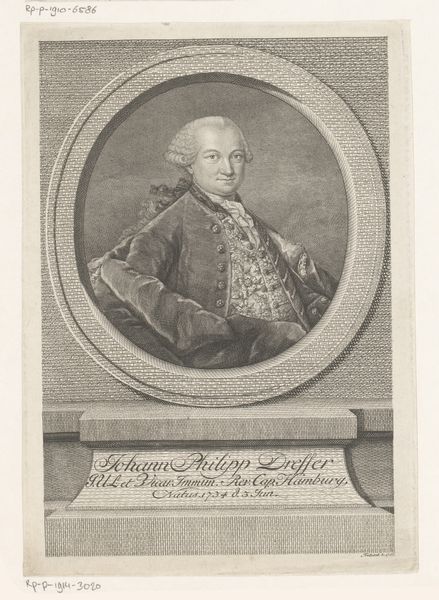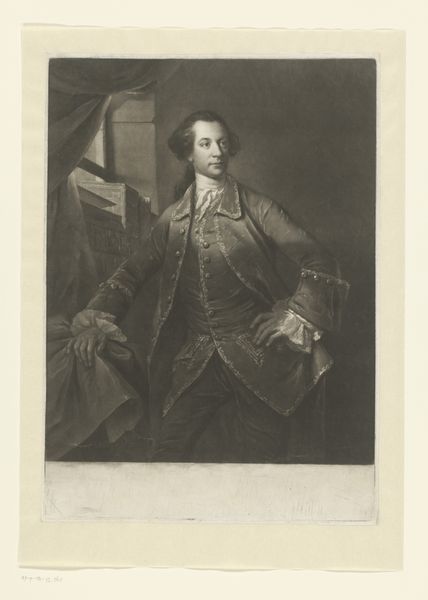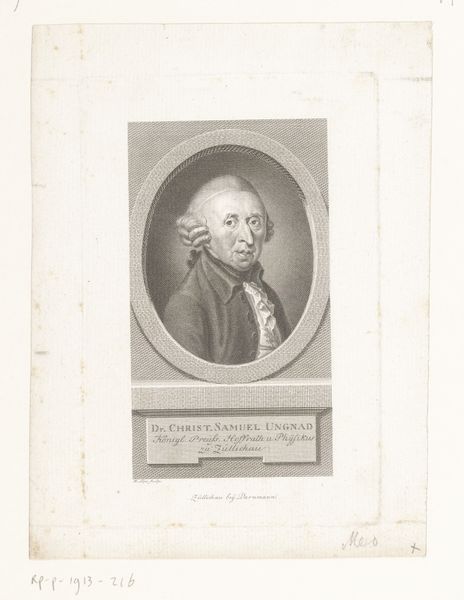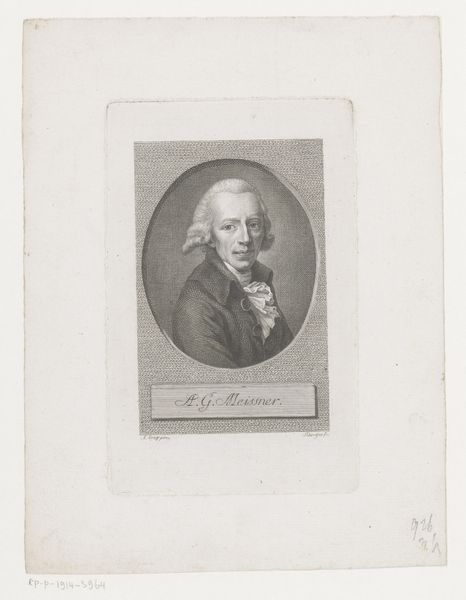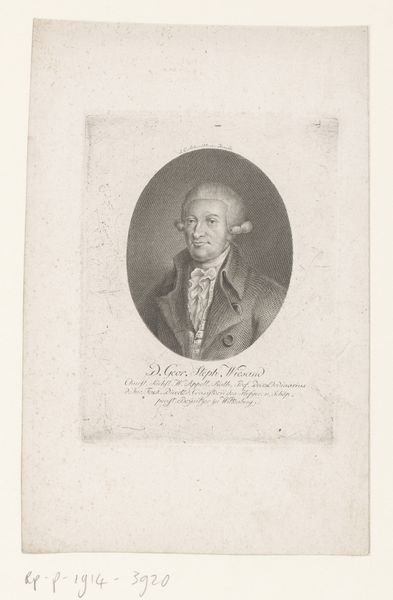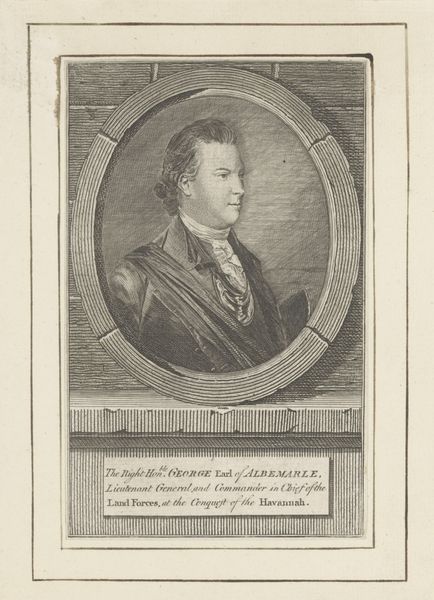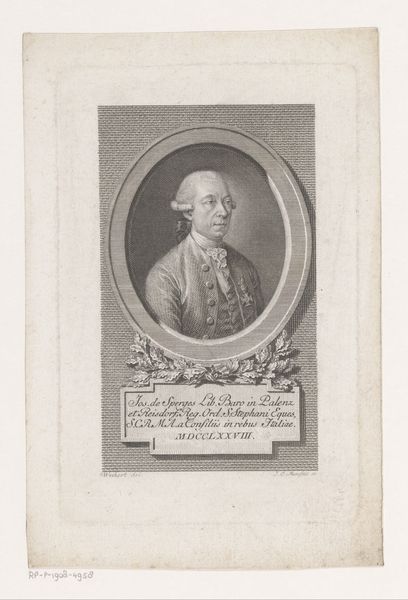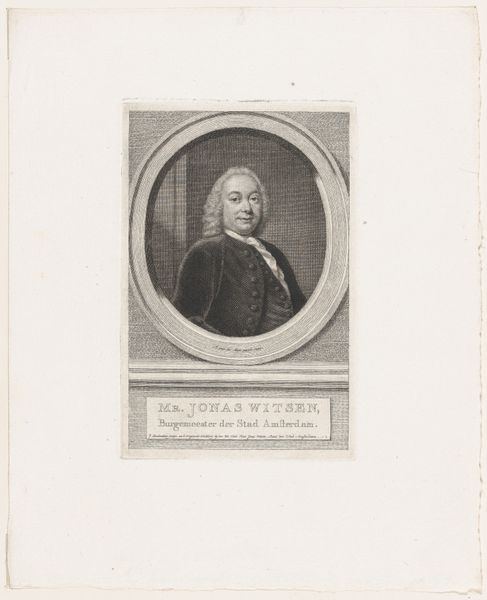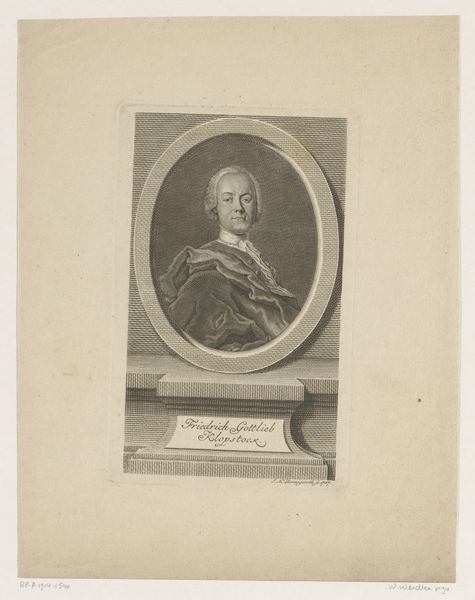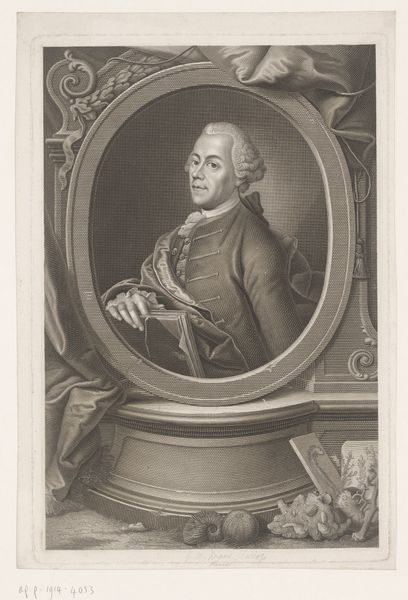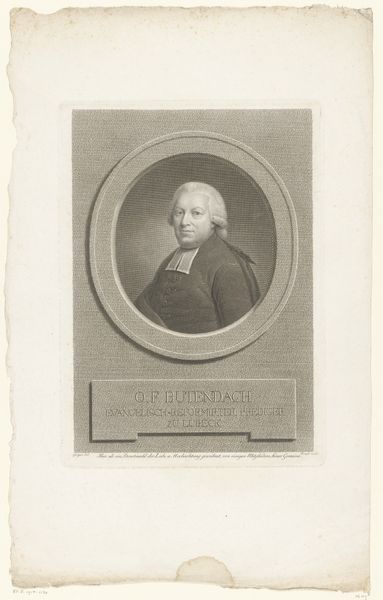
Dimensions: height 195 mm, width 160 mm
Copyright: Rijks Museum: Open Domain
Curator: Ah, I always find myself drawn to this piece, "Portret van Hermann Jakob Tyroff," dating back to 1772. It's a print, an engraving to be exact, by Christoph-Wilhelm Bock, housed right here at the Rijksmuseum. Editor: It’s compelling. My first impression is this stillness, a kind of poised serenity radiating from the sitter. The fine lines of the engraving emphasize a restrained elegance, capturing this Tyroff fellow in what seems like a thoughtful, almost melancholic mood. Curator: Indeed. As a print, the image democratizes portraiture, making it accessible to a wider audience, not just the aristocracy. This places Tyroff, whoever he was, in an interesting socio-political context. Whose stories get told? Whose faces are deemed worthy of preservation and dissemination? Editor: Right. And while the artwork embodies Baroque stylistic elements—the detail, the composition, and the texture—it feels less bombastic and more personal. Do you think this was a conscious move by Bock to distinguish Tyroff or perhaps it was more about what engraving can express versus painting? Curator: Perhaps. Bock's medium plays a significant role; the engraving allows for an incredible level of detail, look at the lines in his hair, the rendering of his garment. The lines define the form while providing the shadows to suggest an almost lifelike quality. The whole image exists because of tiny marks carefully made, but it presents something that appears realistic to the eye. Editor: I'm curious, this act of reproduction, and disseminating identity through print— how does that influence the perception and even the value of the person portrayed? It almost creates a cult of personality through mass distribution, wouldn’t you agree? Curator: It absolutely contributes to the construction of identity and its perception by society. Through this image, Tyroff exists in numerous homes and collections. Each impression serves as a little mirror to the social and intellectual aspirations of the time. But in thinking through these layers it allows us to question who gets seen, how they’re seen and what it means. Editor: Yes, and examining how representation and artistic interpretation come together to shape our understanding of historical subjects opens exciting ways to analyze artworks of different contexts. This portrait makes us look backwards but encourages to reflect critically. Curator: I agree completely, there's a fascinating intersection of technique and cultural meaning within these carefully engraved lines. Thank you for sparking these reflections!
Comments
No comments
Be the first to comment and join the conversation on the ultimate creative platform.
